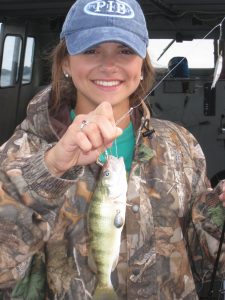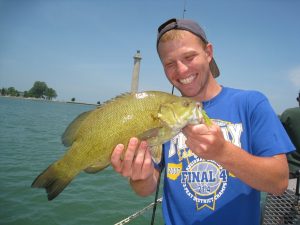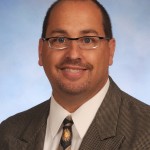We now live in a world driven by access to instant information. In fact, it is estimated that as of January 2018 roughly 95 percent of Americans own a cell phone, including 77 percent of Americans owning smartphones¹. If you own a smartphone, you likely receive numerous notifications ranging from missed calls, texts, email messages, social media posts, meeting reminders, news alerts, and scoring updates from your favorite team. However, have you ever received a notification of high energy prices? What if you could receive a notification that your real-time energy usage was high, with a recommendation to adjust your thermostat to save money on your electric bill? Additionally, what if you had the ability to act on that notification and use your smartphone to adjust your thermostat from anywhere in the world? If you are interested in real-time control over your energy consumption, you will likely have access to this technology in the near future.

Smart electric meter
The number of smart electric meters installed in homes, businesses and farms is growing rapidly, reaching nearly half of all U.S. electricity consumers by the end of 2016. While there are a variety of smart meters available, smart electric meters are commonly classified as either Automated Meter Reading (AMR) or Advanced Metering Infrastructure (AMI) equipment. AMR meters only transmit information in one direction from the smart meter to the utility and are primarily used to collect usage data for billing purposes. In comparison, AMI meters provide two-way interaction of real time electric usage data to both the utility and the consumer. AMI meters are used for more than just billing, by providing real time energy consumption data and allowing consumers and/or utilities the ability to control electric loads and shift non-essential loads to non-peak times.

Smart electric meter
In Ohio, the integration of AMI smart electric meters has increased rapidly by more than 638 percent annually, growing from 16,631 meters in 2007 to 1,078,554 meters in 2016. In addition, installation of AMR smart electric meters in Ohio has increased by 37 percent annually, growing from 277,489 meters in 2007 to 1,310,925 meters in 2016². In 2016, there was a combined total of 2,389,479 smart meters (AMR & AMI) installed in Ohio, ranking 18th in the nation. While the integration of smart meters is growing rapidly, smart meters still represent only 43 percent of all electric meter infrastructure in Ohio.

The number of smart meters installed in Ohio from 2007-2016.
While the integration of smart meters is growing rapidly, many consumers are unaware of these advances in technology installed at their home! For example, in 2015, a year when residential smart meter adoption was about 44% nationwide, the 2015 Residential Energy Consumption Survey (RECS) conducted by the U.S. Energy Information Administration found only 22% of households reported having a smart meter, while 49% reported not having one, and 29% did not know. Meanwhile, only 8% of households reported being aware that they had access to hourly or daily data, and just 4% said they had accessed or viewed that data³.
As the integration of smart meters continues to increase, we will most likely see an increase in interactive and dynamic pricing models such as Time of Use (TOU) pricing and Real Time Pricing (RTP). TOU pricing programs include different predetermined electricity prices for different seasons, days of the week, or time of the day. In comparison, RTP programs fluctuate more frequently as retail electric rate is based on a formula that reflects real time wholesale prices of electricity.
As new smart meter technology and dynamic pricing models are adopted, consumer behavior will play a major role in determining the total monthly electric bill. For example, simple changes such as running your electric dryer or dishwasher at night could save you money. In recent years, we have relied on energy efficient products to lower utility bills, yet moving forward the greatest impact may come from our willingness to change our actions.
Additional Resources:
AEP Ohio – It’s Your Power App
AEP Ohio – Your new smart meter: Installation Schedule
American Municipal Power, Inc. – AMP Makes Advanced Metering Services Available to Members
DP&L – You might hear people talking about it, but what is the Smart Grid all about?
Duke Energy Smart Meter – You’re In Control of Your Energy Use
First Energy – What You Can Expect: Meter Installation
Ohio’s Electric Cooperative – Innovation Leaders
_____________________________
¹ Pew Research Center. (2018, February 5). Mobile Fact Sheet. Retrieved from Pew Research Center Internet and Technology: http://www.pewinternet.org/fact-sheet/mobile/
² U.S. Department of Energy, Energy Information Administration (USDOE/EIA). (2017, November 6). Electric power sales, revenue, and energy efficiency Form EIA-861 detailed data files. Retrieved from Independent Statistics and Analysis: https://www.eia.gov/electricity/data/eia861/
³ U.S. Department of Energy, Energy Information Administration (USDOE/EIA). (2017, December 6). Nearly half of all U.S. electricity customers have smart meters. Retrieved from Today In Energy: https://www.eia.gov/todayinenergy/detail.php?id=34012#

Eric Romich is an Assistant Professor & Extension Field Specialist for Energy Development with OSU Extension.













 Darlene Lukshin
Darlene Lukshin While the practice of redlining ended before the 1970’s, evidence of redlining was still present in Cleveland’s communities in 2010. Comparing the map above to the map below, a higher density of minority groups is evident in areas which were deemed more “unsafe” in 1940. The source for this “one dot, one person” visual is based off individual responses of race alone from the 2010 Decennial Census.
While the practice of redlining ended before the 1970’s, evidence of redlining was still present in Cleveland’s communities in 2010. Comparing the map above to the map below, a higher density of minority groups is evident in areas which were deemed more “unsafe” in 1940. The source for this “one dot, one person” visual is based off individual responses of race alone from the 2010 Decennial Census.
